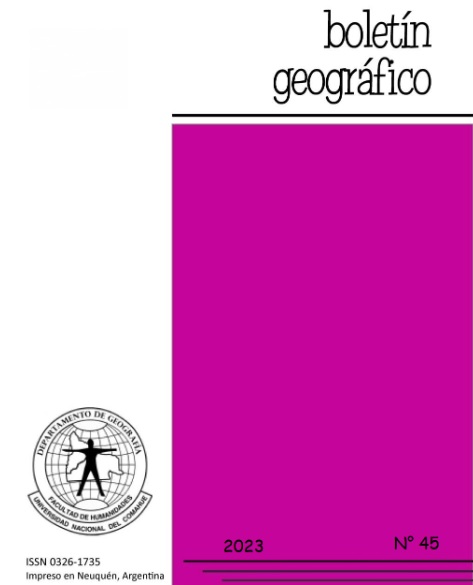Human involvement with the rise of artificial intelligence in the realm of Geospatial Health
Keywords:
NPGIS, Artificial intelligence, Geographical technology, Geospatial participation, HealthAbstract
In the era of Web 3, digital currencies and virtual cities, human decision-making is very special. In It´s crucial to examine human responses alongside artificial intelligence in the healthcare field following an event and to create a collaborative geographic system based on modern technology. The ultimate goal is the restoration of countries´ essential services prioritizing health.
In this research, spatial questions were conducted by considering public opinion, stakeholders, and decision makers under varying mental and emotional conditions. additionally, two different statistical and ranking methods were employed to comprehend the intricacies of individuals' mental states in a mathematical environment. All these methods were executed using software designed for location-based decision making under equal conditions.
This paper focuses on a specific region, as an example applicable to a country or even to a larger scale. The results showed that time factors are completely related to decision criteria. While emerging technologies are promising, complete reliance on artificial intelligence for decision-making is misguided. Human choices are intrinsic to decision-making, and therefore, all relevant criteria for spatial decision-making have been considered.
This pioneering study, conducted for the first time, showed that human choices can be optimal in different situations with similar conditions. Meanwhile, artificial intelligence only makes logical decisions that are not compatible with human thinking. The ongoing research holds potential value for neurologists or mental health specialists emphasizing the significance of geographical sciences in urban development. While it´s conceivable that medical issues and events can be addressed with artificial intelligence it appears that at least for the next few decades, even with the advancement of artificial intelligence, human presence remains essential in healthcare decision-making.
Downloads
References
Aeon, B., Faber, A., & Panaccio, A. (2021). Does time management work? A meta-analysis. PLOS ONE, 16(1), e0245066. https://doi.org/10.1371/journal.pone.0245066
Anderson, M., & Radil, S. M. (2019). A hard binary to shake: The limitations and possibilities of teaching GIS critically. Canadian Geographer, 64(4), 471–483. https://doi.org/10.1111/cag.12526
Anderson, M., & Sternberg, C. (2012). “Non-White” gentrification in Chicago’s Bronzeville and Pilsen. Urban Affairs Review, 49(3), 435–467. https://doi.org/10.1177/1078087412465590
Aqib, M., Kumar, D., & Tripathi, S. (2022). Machine Learning for Fog Computing: Review, Opportunities and a Fog Application Classifier and Scheduler. Wireless Personal Communications. https://doi.org/10.1007/s11277-022-10160-y
Arribas-Bel, D., Green, M. A., Rowe, F., & Singleton, A. (2021). Open data products-A framework for creating valuable analysis ready data. Journal of Geographical Systems, 23(4), 497–514. https://doi.org/10.1007/s10109-021-00363-5
Badwi, I. M., Ellaithy, H. M., & Youssef, H. E. (2022). 3D-GIS parametric modelling for virtual urban simulation using CityEngine. Annals of GIS, 28(3), 325–341. https://doi.org/10.1080/19475683.2022.2037019
Baron, S., Miller, K., & Tallant, J. (2022). Out of time. In Oxford University Press eBooks. https://doi.org/10.1093/oso/9780192864888.001.0001
Bayazit, O. (2006). Use of analytic network process in vendor selection decisions. Benchmarking: An International Journal, 13(5), 566–579. https://doi.org/10.1108/14635770610690410
Brown, G. (2016b). A review of sampling effects and response bias in Internet Participatory Mapping (PPGIS/PGIS/VGI). Transactions in Gis, 21(1), 39–56. https://doi.org/10.1111/tgis.12207
Brunsdon, C., & Comber, A. (2020). Opening practice: supporting reproducibility and critical spatial data science. Journal of Geographical Systems, 23(4), 477–496. https://doi.org/10.1007/s10109-020-00334-2
Builes, D. (2021). Look at the time! Analysis. https://doi.org/10.1093/analys/anab008
Cochran W G., (1977). Sampling Technique. third Edition, John Wiley and Sons Inc., New York, 442 Pages, https://archive.org/download/ Cochran1977SamplingTechniques _201703 / Cochran_ 1977_ Sampling %20Techniques.pdf
Choi, S. Y., Abel, M., Siqi-Liu, A., & Umanath, S. (2021). National identity can be comprised of more than pride: Evidence from collective memories of Americans and Germans. Journal of Applied Research in Memory and Cognition, 10(1), 117–130. https://doi.org/10.1016/j.jarmac.2020.09.004
Dunn, C. E. (2007). Participatory GIS — a people’s GIS? Progress in Human Geography, 31(5), 616–637. https://doi.org/10.1177/0309132507081493
Fagerholm, N., García-Martín, M., Torralba, M., Bieling, C., & Plieninger, T. (2022). Public participation geographical information systems (PPGIS): Participatory research methods for sustainability ‐ toolkit #1. Gaia (Heidelberg), 31(1), 46–48. https://doi.org/10.14512/gaia.31.1.10
Fallah, M., (2022) August 23, Doctoral dissertation under the supervision of Dr. Tajoddin Karmi, Assistant Professor of Faculty of Geographical Sciences and Department of Urban Planning, Kharazmi University.
Fallah, M., Karami, T., & Kojouri, M. K. (2022a). National participant geospatial information system in urban planning. ВісникХарківського Національного Університету Імені В.Н. Каразіна, 27, 32–50. https://doi.org/10.26565/1992-4259-2022-27-03
Fallah, M., Karami, T., & Kojouri, M. K. (2022b). Explaining the Role of National Participant Geospatial Information System in the Effectiveness of Urban Services with a New Approach. Jurnal Geografi, 15(1), 32. https://doi.org/10.24114/jg.v15i1.38992
Friedman, J. H., Hastie, T., & Tibshirani, R. (2010). Regularization paths for generalized linear models via coordinate descent. Journal of Statistical Software, 33(1). https://doi.org/10.18637/jss.v033.i01
Friedman, M. (1959). The demand for money: Some theoretical and empirical results. Journal of Political Economy, 67(4), 327–351. https://doi.org/10.1086/258194
Friedmann, J. (1988). Planning in the public domain. https://doi.org/10.1515/9780691214009
Ghose, R. (2017). Public-Participation GIS. International Encyclopedia of Geography: People, the Earth, Environment and Technology, 1–11. https://doi.org/10.1002/9781118786352.wbieg1155
Goreis, A., & Voracek, M. (2019). A Systematic Review and Meta-Analysis of Psychological Research on Conspiracy Beliefs: field characteristics, measurement instruments, and associations with Personality traits. Frontiers in Psychology, 10. https://doi.org/10.3389/fpsyg.2019.00205
Greene, T. J. (2022). Disinformation: the nature of facts and lies in the post-truth era. Public Services Quarterly, 18(4), 301–302. https://doi.org/10.1080/15228959.2022.2121136
Haiti Projects., (2019), Empowering Women and their families in Rural Haiti., https:// www. Haitiprojects .org/ what-is-haiti-projects
Haiti Situation Report, (2019), UN Office for the Coordination of Humanitarian Affairs, UN Office for the Coordination of Humanitarian Affairs., To learn more about OCHA's activities, https://www.unocha.org, FTS https://fts.unocha.org/appeals/679/summary
Indrajit, A., Van Loenen, B., & Van Oosterom, P. (2019). Assessing spatial information themes in the spatial Information Infrastructure for Participatory Urban Planning Monitoring: Indonesian Cities. ISPRS International Journal of Geo-information, 8(7), 305. https://doi.org/10.3390/ijgi8070305
Isfandiyār, M. I. a. I. (1905). An abridged translation of the history of Ṭabaristʹan.
Johnson, M., Adams, V. M., Byrne, J., & Harris, R. M. B. (2022). The benefits of Q + PPGIS for coupled human-natural systems research: A systematic review. AMBIO: A Journal of the Human Environment, 51(8), 1819–1836. https://doi.org/10.1007/s13280-022-01709-z
Krejcie, R. V., & Morgan, D. W. (1970). Determining sample size for research activities. Educational and Psychological Measurement, 30(3), 607–610. https://doi.org/10.1177/001316447003000308
Larrain, A. Á., & McCall, M. K. (2018). Participatory Mapping and Participatory GIS for Historical and Archaeological Landscape Studies: a Critical Review. Journal of Archaeological Method and Theory, 26(2), 643–678. https://doi.org/10.1007/s10816-018-9385-z
Lewenstein, B. V. (2022). Is citizen science a remedy for inequality? Annals of the American Academy of Political and Social Science, 700(1), 183–194. https://doi.org/10.1177/00027162221092697
Malpass, A. (2021). All the time in the world. Mind, 131(523), 788–806. https://doi.org/10.1093/mind/fzaa086
McAllister, J. (2019). Does artistic value pose a special problem for time travel theories? British Journal of Aesthetics, 60(1), 61–69. https://doi.org/10.1093/aesthj/ayz041
Prener, C. (2021). Digitizing and Visualizing Sketch map Data: A Semi-Structured Approach to Qualitative GIS. Cartographica: The International Journal for Geographic Information and Geovisualization, 56(4), 267–283. https://doi.org/10.3138/cart-2020-0030
Radil, S. M., & Anderson, M. (2018). Rethinking PGIS: Participatory or (post)political GIS? Progress in Human Geography, 43(2), 195–213. https://doi.org/10.1177/0309132517750774
Saaty, T. L. (1990). How to make a decision: The analytic hierarchy process. European Journal of Operational Research, 48(1), 9–26. https://doi.org/10.1016/0377-2217(90)90057-i
Saaty, T. L. (2004). Fundamentals of the analytic network process — Dependence and feedback in decision-making with a single network. Journal of Systems Science and Systems Engineering, 13(2), 129–157. https://doi.org/10.1007/s11518-006-0158-y
Sharma, L., & Garg, P. (2021). Artificial intelligence. In Chapman and Hall/CRC eBooks. https://doi.org/10.1201/9781003140351
Silva, C. N. (2013a). Open-source urban governance. In Advances in electronic government, digital divide, and regional development book series (pp. 1–18). https://doi.org/10.4018/978-1-4666-4169-3.ch001
Silva, C. N. (2013b). Open-source urban governance. In Advances in electronic government, digital divide, and regional development book series (pp. 1–18). https://doi.org/10.4018/978-1-4666-4169-3.ch001
Statistical yearbook of Iran, (2018), national portal of statistics "Population of cities of Iran, Statistics Center of Iran, https://www.amar.org.ir/english/Iran-Statistical-Yearbook
Sternberg, C., & Anderson, M. (2014). Contestation and the local trajectories of neoliberal urban governance in Chicago’s Bronzeville and Pilsen. Urban Studies, 51(15), 3198–3214. https://doi.org/10.1177/0042098014532143
Tabatabai, A., Zarei, B., Kamran, D H., Ahmadi, A., (2022), Investigating the process of formation of national identity in Iran, in terms of territorialism., Journal of Geography, Vol.20, No.72, Spring 2022, http://dor.net/dor/20.1001.1.27833739.1401.20.72.2.8
Teixeira, H., Magalhães, A., Ramalho, A., De Fátima Pina, M., & Gonçalves, H. (2021). Indoor Environments and Geographical Information Systems: A Systematic Literature review. SAGE Open, 11(4), 215824402110503. https://doi.org/10.1177/21582440211050379
Usahidi H.P.E, Ushahidi Haiti Project Evaluation, (2011), in: Morrow, A., Mock, N., Papendieck, A., Kocmich, N., (2014), Independent Evaluation of the Ushahidi Haiti Project, some of the authors of this publication are also working on these related projects on 30 October. (2014), consulted in 2022 from:
Valánszki, I., Kristensen, L. S., Jombach, S., Ladányi, M., Kovács, K. F., & Fekete, A. (2022). Assessing Relations between Cultural Ecosystem Services, Physical Landscape Features and Accessibility in Central-Eastern Europe: A PPGIS Empirical Study from Hungary. Sustainability, 14(2), 754. https://doi.org/10.3390/su14020754
Wessels, B. (2010). The role of local agencies in developing community participation in E-Government and E-Public Services. In IGI Global eBooks (pp. 286–305). https://doi.org/10.4018/978-1-61520-929-3.ch015
Zolkafli, A., Liu, Y., & Brown, G. (2017). Bridging the knowledge divide between public and experts using PGIS for land use planning in Malaysia. Applied Geography, 83, 107–117. https://doi.org/10.1016/j.apgeog.2017.03.013
CDMA, Southwest Haiti Earthquake: Situational Report #01, January (2022), https://reliefweb.int/report/haiti/southwest-haiti-earthquake-situational-report-01-january-2022
Published
How to Cite
Issue
Section
ARK
License
Copyright (c) 2023 Boletín GeográficoTransfer of rights and data processing
The acceptance of an article for publication in the Journal Geographic Bulletin implies the cession of the rights of printing and reproduction, by any means and means, of the author in favor of the Department of Geography of the National University of Comahue, which will not reject any request reasonable for the authors to obtain permission to reproduce their contributions. The total or partial reproduction of the works published in the Geographic Bulletin must be done citing the origin, otherwise, the copyright is violated.
Likewise, it is understood that the concepts and opinions expressed in each work are the sole responsibility of the author, without being responsible or in solidarity, necessarily, neither the editorial staff nor the editorial staff.
It is the responsibility of the authors to be able to provide interested readers with copies of the raw data, procedure manuals, scores and, in general, relevant experimental material.
Likewise, the Management of the journal guarantees the appropriate treatment of personal data
COPYRIGHT TRANSFER FORM

















 Journal of the
Journal of the 